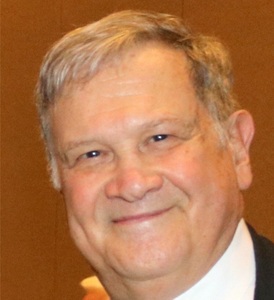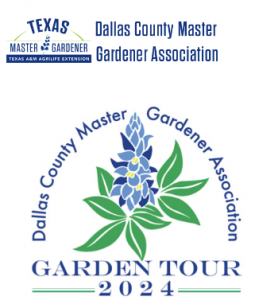We often find that what is old is new again. The discoveries in science prior to the 20th century were often conducted by gentlemen scientists, amateur or self-funded researchers such as Ben Franklin, Sir Isaac Newton, Alfred Russell Wallace, and Charles Darwin. However, by the middle of the 20th century, science was dominated by researchers employed by government and university research laboratories. What could have been identified as citizen science became more institutionalized in the 20th century. In the final decades of the 20th century, the transformation was questioned, and we began to see the return to science by nature-loving amateurs.
Citizen Scientists in 19th Century Texas
Familiar citizen scientists from 19th century Texas were not formally trained in the sciences, but were motivated to explore and collect from around Texas and send specimens to museums back east or Europe. We recognize Julien Reverchon and Gideon Lincecum as there are many species and places named after them; they were truly amateur scientists. Ferdinand Lindheimer, who came after them in the late 19th century, was formally trained and is known as the Father of Texas Botany. The field was the place where these men did their research.
Citizen Scientists Today
As we try to deal with the massive amount of data that we must analyze, it is becoming apparent that we need to collect vast amounts of data so that it can be analyzed to determine the status of the environment as a result of development, climate change, and other factors we are trying to understand. Citizen Science is a way to expand our knowledge by multiplying the number of original observations using new tools and motivated amateurs.
In 2004 several North Texas Master Naturalists began assisting a University of Dallas biology professor in her summer fieldwork observing, counting, and measuring Hexalectris Orchids in Dallas County. The data collected has created a body of knowledge where very little was known about these orchids before this fieldwork. Our efforts made data available to the professor that would have been difficult to collect without the assistance of graduate or undergraduate students from the university, where student help is not readily available. (If you would like to participate in the 2018 field survey there is information about the project in the NTMN May announcements – LINK TO ANNOUNCEMENTS).
One new tool that we have now is iNaturalist which allows us to collect data in the field with a smartphone and upload the observation to the iNaturalist database. Each observation includes the photo, date and time, and GPS verified location. The photos are reviewed by experts and if an agreement is reached by the content experts, the observation is considered research grade. With this validated data it is possible to research the data to determine trends, migration patterns, and seasonal range for both mobile and sessile organisms. (See the article in this newsletter about the City Nature Challenge using iNaturalist this past April). We have used iNaturalist to assist us in collecting data for our BioBlitzes; we can collect a lot of data in a matter of hours.
Bumble Watchers
At the Texas Master Naturalist Annual Conference a few years ago during the bus ride to a field excursion, I struck up a conversation with a naturalist from a chapter north of ours near the Red River. I asked her what she did as a master naturalist and she said she was a “bumble watcher.” She recorded the observations and photos she made of bees on her property and uploaded them to the bumble watcher TPWD website. She said that because of her proximity to the Red River she had observed some native bees that were very rarely seen in Texas. She was contacted by the manager of the project because he wanted to verify that these bees were actually observed on her property. The native bees are much more effective pollinators of our native plants, whereas the honeybees imported from Europe are more efficient pollinating the crops brought from Europe. The scientist made the trip from Austin to observe for himself the bees that she had identified. If you go to the website (www.texasbumblebees.com) that was used to collect data and photos of the bees in 2012, you will see that it is no longer active. Is the Bumblebee Watch program still active? Yes, but by using iNaturalist to collect data the observations are verified by bee experts resulting in research grade observations. The result is vastly more data which can be verified by experts without the necessity of an expert to travel from Austin to verify the data.
NTMN Citizen Science Projects
We still use old tools and methods to collect and analyze data. The Audubon Society’s Christmas Bird Count was begun in 1900 with bird counts which take place for two weeks at the beginning of each year. The data collected since 1900 is analyzed by professional researchers to produce bird population and biodiversity indicators.
The North Texas Master Naturalists have several projects which are considered Citizen Science:
- The Texas Stream Team tests water throughout the watersheds in the Dallas area.
- Project Feeder Watch
- Amphibian Watch
- Dallas Herbarium
- Citizen Foresters
- BioBlitz Events
- And others …
To make it easier to understand the scope of Citizen Science, there is a chapter in the new edition of the textbook we use in class and we now have added a class on Citizen Science for our new trainees. We plan to add additional opportunities to participate in Citizen Science. Your suggestions are welcome.
Useful Links:
Christmas Bird Count: https://en.wikipedia.org/wiki/Christmas_Bird_Count
iNaturalist: https://en.wikipedia.org/wiki/INaturalist
Julien Reverchon: https://en.wikipedia.org/wiki/Julien_Reverchon
Gideon Lincecum: https://en.wikipedia.org/wiki/Gideon_Lincecum
Ferdinand Linkheimer: https://en.wikipedia.org/wiki/Ferdinand_Lindheimer
May Announcements with notice of Hexalectris excursions – this is on Mail Chimp in the May_2018_Chapter meeting folder: https://gallery.mailchimp.com/b2a3fd0c3f9b6e3321ed0a728/files/5dcf57bf-f6fa-426a-9ce5-e7dfd995c2ca/May_2018_Meeting_All_Announcements_V3.pdf
May Announcements – using BITLY – http://bit.ly/2wA5pYe
Texas Stream Team: http://www.meadowscenter.txstate.edu/Service/TexasStreamTeam.html
Bumble Bees: https://xerces.org/at-risk-bumble-bees/
Bruce Stewart
President
 North Texas Master Naturalist
North Texas Master Naturalist
